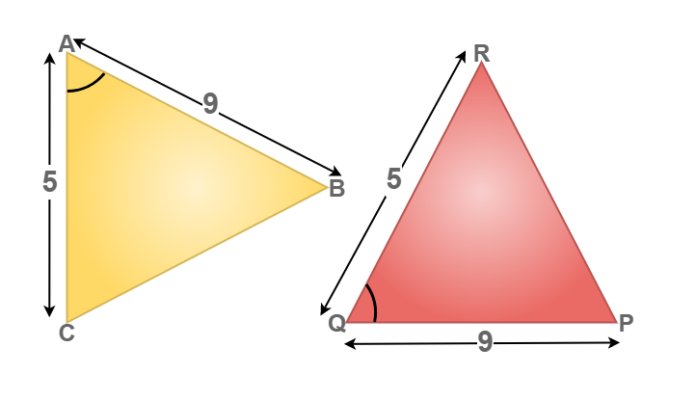When learning geometry, things can get confusing, but don’t worry. Today, we’re going to look at something fun and simple—Pedro Is Going to Use SAS to Prove That PQR. If that sounds tricky, don’t panic! We’ll walk through it like a story. SAS stands for Side-Angle-Side, which is one way to prove that two triangles are the same, or congruent. When someone says two triangles are congruent, it means they are exactly the same in shape and size, just maybe turned or flipped. So, when we say pedro is going to use sas to prove that pqr, we mean Pedro will show how triangle PQR is congruent to another triangle using the SAS rule.
What Does It Mean When Pedro Is Going to Use SAS to Prove That PQR
When we say pedro is going to use sas to prove that pqr, we mean he will show that triangle PQR is the same as another triangle using a special rule. That rule is called SAS, which stands for Side-Angle-Side. It helps in geometry to show two triangles are the same in shape and size. This rule checks if two sides and the angle between them are the same in both triangles. If they are, then the triangles are congruent. Pedro is using this rule to be sure, not to guess. It’s like solving a puzzle by matching parts. So, Pedro’s job is to show triangle PQR fits perfectly with another triangle using this SAS idea.
SAS Made Easy: The Geometry Trick Pedro Uses
SAS might sound like a hard math term, but it’s actually a fun little trick once you get it. Pedro uses SAS by looking at two sides of a triangle and the angle between those sides. If another triangle has the same two sides and the same angle between them, then the two triangles are congruent. That means they’re the same shape and size. This trick helps Pedro show that triangle PQR is not just close, but exactly the same as the other one. It’s like checking if two puzzle pieces are a perfect match. Pedro uses this smart rule to be sure his triangles are really the same. SAS makes it clear and simple!
Why Pedro Chooses SAS to Prove Triangle PQR
Pedro chooses the SAS rule because it’s strong and easy to use when you know the right parts. In triangle PQR, if he knows two sides and the angle between them, he doesn’t need anything else to prove congruence. That’s why SAS is so helpful! Other rules may need more information, like all three sides or all three angles. But SAS only needs two sides and one angle in the middle. Pedro can save time and be sure of his answer. That’s why he picks SAS—because it works fast and makes things easier. Geometry can be tricky, but SAS helps Pedro do it step by step, just like building a LEGO with the right pieces.
Let’s Learn: What Is Triangle Congruence and Why Does It Matter
Triangle congruence means two triangles are exactly the same shape and size. One might be turned or flipped, but they still match perfectly. This is important in math because we don’t always see triangles the same way, but we still need to know they are equal. Pedro is trying to show that triangle PQR is congruent to another triangle, which means he’s checking if they are the same. This helps in building things, solving puzzles, and doing good math. When you understand congruence, you can use rules like SAS, SSS, and ASA to prove it. Pedro is using one of these—SAS—to make sure triangle PQR really matches. It’s a useful math tool you can use too!
Step-by-Step: How Pedro Uses Side-Angle-Side to Prove Triangle PQR
Pedro starts by finding two sides in triangle PQR and then looks at the angle between those sides. Let’s say side PQ and side PR are the ones he picks. He also checks the angle in between, angle P. Then he looks at another triangle to see if it has the same sides and same angle. If it does, Pedro says, “Yes! They match!” and that’s how he proves the triangles are congruent. That’s the power of SAS. It’s just three things—side, angle, side—but they tell us everything. Pedro’s step-by-step way helps make sure he doesn’t guess. He uses the rule like a math detective solving a case. It’s fun and super smart
Conclusion
Pedro showed us how simple and smart it is to use SAS to prove triangle PQR. By checking just two sides and one angle, he could be sure the triangles matched. This is one of the best ways to prove congruence in geometry without confusion. It’s like using clues to solve a mystery—fun and smart!
So, if you’re ever trying to prove two triangles are the same, try Pedro’s way. Start with SAS and check the sides and angle carefully. You don’t need to be a math genius—just follow the steps and stay curious. Geometry becomes easy when you know the right tricks.
FAQs
Q: What does SAS mean in math?
A: SAS stands for Side-Angle-Side. It’s a way to show that two triangles are the same by matching two sides and the angle between them.
Q: Why did Pedro use SAS to prove triangle PQR?
A: Pedro used SAS because it’s an easy and strong rule to show that triangle PQR is the same as another triangle.
Q: Can I use SAS if I only know one side and one angle?
A: No, you need two sides and the angle between them to use SAS. All three parts must match for it to work.


